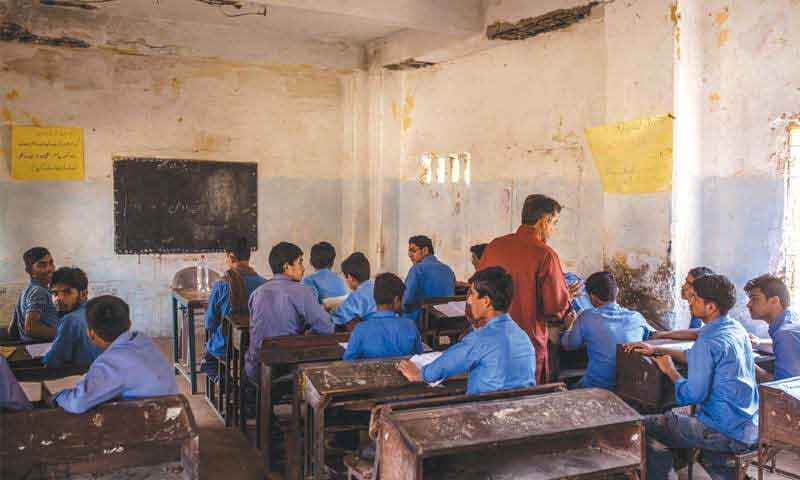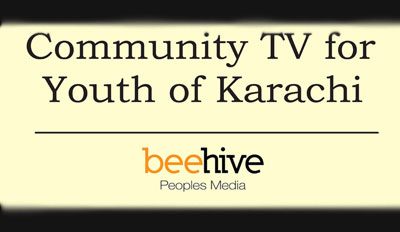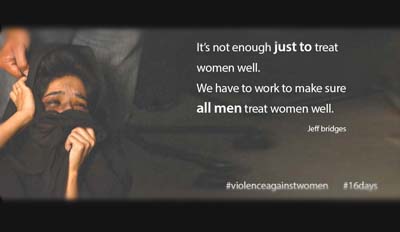Balancing the youth bulge in Karachi
By Zeeshan A.Shah
Karachi is the largest city in Pakistan. It has been the capital city of Pakistan since its birth, both literal and figurative by being the tipping point for discovery, exploration, history and economics. Due to the high birth rate in Pakistan, similar to other low-income high-populated countries in the developing world, we are burdened with too many young people. Karachi remains traumatized today, crossing the 24 million population mark and making it the fourth most populous city in the world.
Karachi has the highest population of Afghani Migrants who are staying as guests from across the border but have succeeded in becoming permanent refugees; fueling the already serious migration crisis in the city. The refugee population is right now a major part of Karachi’s 24 million people. These people have acquired fake identity cards under illegal flawed systems and are now finally slowly being checked for compliance. This is a grave concern for the government of Pakistan and the provincial and city governments, as it also has dangerous implications through the high drug trade being done through border channels and weapons supplies on a constant basis that is being used to arm the younger generation, brain washing them into taking up weapons instead of education.
The Youth Population (ages 15-29) has increased from 30% in 1981 to 35% in 1998, when the last census took place. In a country where the census has not been conducted for the last 18 years, a serious question mark is raised on the governance of the country and its overall vision. Due to the lack of leadership and poor governance in Pakistan for over two decades, Karachi and its youth are facing a daunting task to survive.
Youth Migration from rural to urban cities is a global trend. Youth is a crucial segment of the national population. If the youth is educated, well trained and channelized they can play a crucial role in the development of the economy. Countries like China, South Korea, Iran and Turkey are some examples. On the other hand, scattered and fragmented youth societies, who lack direction, training or education, can actually cause turmoil and disruption in society. Here, countries like Bangladesh and Pakistan are becoming visibly obvious.
Since youth is the back bone of any nation, they play a vital role in the progress of any country. The more the youth bulge in a country, the more the chances to ensure higher GDPs. This happens when as the youth are employed, earn more, multiply productivity, have families, have children, they create an overall substantial economic growth that results in prosperity. Economic progress, national cohesion and social peace depend substantially on the success in providing opportunities to the youth; the ultimate goal is to streamline the role of youth positively into the national life. The government needs to take charge to address this vital point of action. Countries with higher economic success are the ones with the best optimum utilization and absorption of the youth bulge.
Pakistan ranks the lowest in South Asia on primary education. Here only 5% of youth is enrolled in college. This also suggests that a huge chunk of unemployed youth force needs to be positively engaged. Further survey states that it was further estimated over 43% of the younger generation believed that the country’s situation will get worse in the future. Another result found out that over 49% of the people graduating from college would like to work abroad. These two trends pose a direct threat to the country in terms of progress and economic prosperity as it indicates a growing sense of negative energy, frustration, lack of confidence and diminishing hope.

In 1998, Pakistan crossed 132 million with the youth population rising to 36.3 million. In 2015, the country crossed 190 million with the bulging youth at 53.2 million. With this kind of phenomenal growth in population, there is always hope for performance through education, diversity and increased motivation for excellence.
Pakistan’s key city offers many opportunities for growth, has great natural resources, a cheaper labor force but a potential to become a prosperous country only if the key portion of the population is looked after by the state, giving them hope and opportunity. Karachi’s migration challenges are tremendous. The local government is unable to produce enough jobs for the youth masses out in the city. Jobs are the key to success for Karachi. Over 90% of the youth believe that corruption is the number one problem in the city, followed by inflation, violence, unemployment, poverty, pollution, lack of education and population.
Government sector jobs are not based on merit orientation and involve nepotism. Private sector jobs are highly competitive and are not advertised for masses. NGO jobs are also preferably given upon recommendation or Sifarish / Nepotism. Over 68% of men believe in working for the government, 54% want private jobs, 28% not for profit jobs and 47% working as entrepreneurs.
With over 75% of the school going youth and 90% of the college going youth having access to mobile phones and cheap internet packages, they are getting more frustrated today having direct access to communication, information to the global world, trends and successes elsewhere thereby increasing their resentment and reducing their own motivation and leading them towards violence and destruction. This inverse proportion of population to education explains why Karachi has become one of the most violence prone cities in the world.
Education is the key solution to improving the migration issues. We need to engage our youth and prevent the brain drain that is occurring in Karachi and Pakistan as younger people are getting the wrong vibes and are being led to believe that the future is darker. The fact is that the future is exceptionally bright inside Pakistan as the government can take this matter on priority, identify educators, trainers and leaders, utilize their skillsets to retain the youth masses, absorb them into jobs, create new jobs, improve vocational skills, feed them positive vibes, reduce the rural urban divide by reaching rural communities and create jobs there.
Another issue that also affects migration indirectly is the issue of transportation. About 20% of all expenses in Karachi go into conveyance, similar to lower income generating cities globally. To fix this issue, we need to have better governance. We need more bus routes and better buses in the city to cater to the mass population.
On the list of most livable cities, Karachi ranks 135 out of 140. A lot needs to be done. But it will take resilience and commitment which is very rarely found in our country’s government machinery.
Zeeshan A.Shah is a leader, environmental journalist, media broadcaster and a change maker with an acute focus on development affairs & education for Pakistan.







